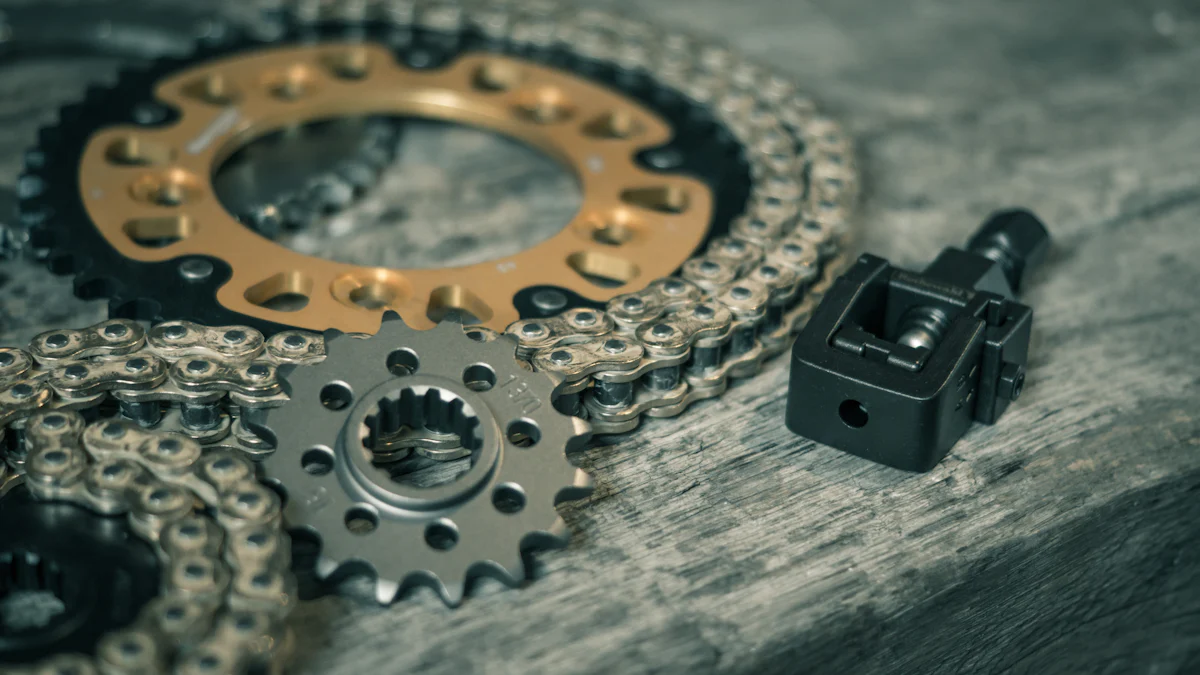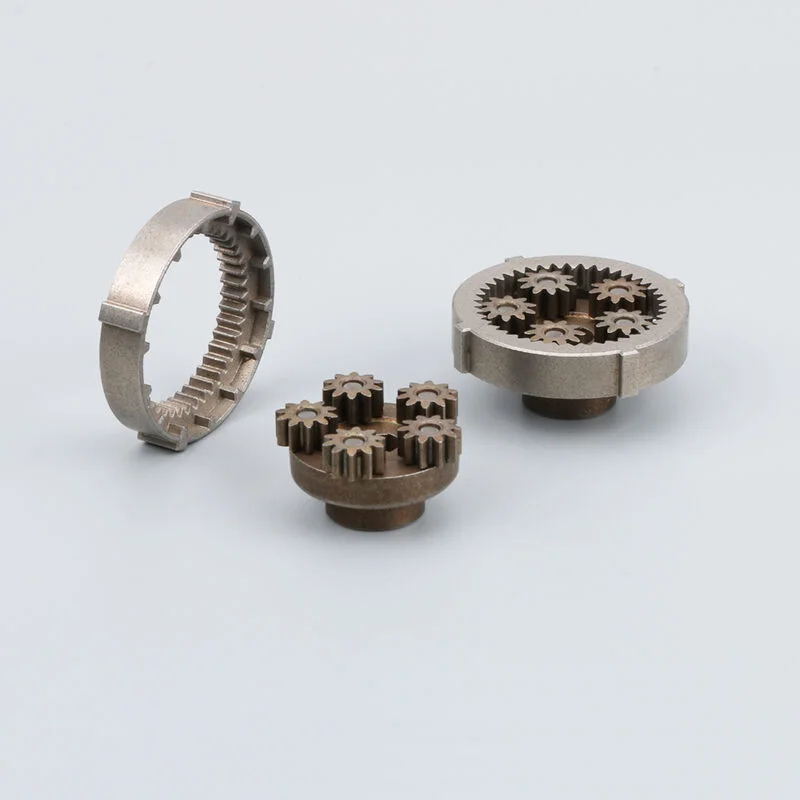Powder metallurgy products, which are components crafted from metal powders through compaction and sintering, play a crucial role in various industries. This process allows me to create precise and efficient materials tailored to specific needs. Industries like automotive, aerospace, and healthcare rely on what are powder metallurgy products for gears, turbine discs, and surgical tools. Their versatility makes them indispensable in modern manufacturing.
Understanding what are powder metallurgy products
What is powder metallurgy?
Powder metallurgy is a manufacturing process that uses finely divided metal powders to create components. This technique has a rich history, dating back thousands of years. For example, metallurgists in ancient India crafted the Delhi column using iron powder between 35 and 414 A.D. However, the modern development of powder metallurgy began in the 19th century with innovations like tungsten powder for lamp filaments. Over the last 25 years, this process has gained recognition as a superior method for producing high-quality parts due to its efficiency and sustainability.
Unlike traditional metalworking, powder metallurgy offers unique advantages. It allows for the creation of intricate designs and minimizes material waste, with scrap rates as low as 3%. This makes it an ideal choice for industries requiring precision and cost-effectiveness.
Key steps in manufacturing: powder creation, compaction, and sintering
The powder metallurgy process involves four key stages: powder production, blending, compacting, and sintering. Powder production is achieved through methods like atomization, chemical reduction, and grinding. During compaction, I apply pressure to the blended powder within a die to form a “green compact.” Finally, sintering heats the compacted material below its melting point, enhancing its mechanical strength and density.
Common materials used in powder metallurgy
Powder metallurgy utilizes a variety of materials, each chosen for its specific properties. Stainless steel resists corrosion, making it suitable for medical and aerospace applications. Copper alloys, like bronze, are ideal for self-lubricating bearings. Lightweight aluminum is popular in automotive and aerospace industries, while iron, often alloyed with carbon, is widely used for automobile components. Titanium, though expensive, offers exceptional strength and corrosion resistance.
Advantages of powder metallurgy products

Cost-effectiveness and material efficiency
Powder metallurgy offers significant cost savings in manufacturing. I find this process particularly efficient because it fabricates parts close to their final dimensions. This minimizes the need for machining, saving both time and money. Over 97% of the raw material becomes part of the final product, which drastically reduces waste. Additionally, the process supports high-volume production, making it ideal for manufacturing over 10,000 parts annually.
Another advantage is the ability to combine multiple components into a single part. This reduces assembly requirements and simplifies the supply chain. By eliminating secondary machining and minimizing material loss, powder metallurgy ensures cost-effective production without compromising quality.
Customization and design flexibility
The flexibility of powder metallurgy allows me to create intricate designs with tight tolerances. This process enables the production of unique components that are difficult or impossible to achieve using traditional methods. For example, metal injection molding combines powder metallurgy with plastic injection molding, making it possible to produce extremely complex shapes.
I also appreciate how powder metallurgy supports 3D designs without adding significant costs. This capability is invaluable for industries requiring custom solutions, such as aerospace and medical devices. The ability to accommodate intricate geometric features ensures that even the most challenging designs can be realized efficiently.
Environmental benefits and reduced waste
Powder metallurgy stands out for its environmental advantages. It generates less waste and air pollution compared to conventional methods. The near-net-shape manufacturing process minimizes material loss, and any excess powder is often recyclable. Studies show that this method can use up to 90% less material than traditional machining for complex components.
Energy efficiency is another key benefit. Powder metallurgy requires lower temperatures for sintering, which reduces energy consumption and greenhouse gas emissions. By using recycled materials, this process also conserves natural resources and lessens its environmental impact. These factors make powder metallurgy a sustainable choice for modern manufacturing.
Applications of powder metallurgy products

Automotive components
Powder metallurgy plays a vital role in the automotive industry. I often see it used to manufacture components that demand precision and durability. Its ability to produce complex shapes with minimal waste makes it ideal for high-volume production. Common automotive components made using this process include the following:
| Component | Description |
|---|---|
| Oil Impregnated Bearing | A bearing that absorbs and retains oil, used in various engine parts like camshaft and crankshaft bearings. |
| Crankshaft Timing Gear | Ensures synchronization between the crankshaft and camshaft. |
| Connecting Rods | Transfers forces from the piston to the crankshaft and converts linear motion to rotational motion. |
| Valve Seat Inserts | Provides durable seating surfaces for engine valves, ensuring a tight seal. |
| Oil Pump Rotor | Circulates oil throughout the engine. |
This process also offers several advantages for automotive applications: it minimizes waste, reduces costs, and allows for the production of precise, complex parts. Additionally, it eliminates the need for finishing processes and supports automation, further enhancing efficiency.
Aerospace and defense applications
In aerospace and defense, powder metallurgy meets stringent requirements for lightweight and durable components. I’ve observed its use in crafting jet engine turbine discs, which connect engine fans, compressors, and blades. These parts must withstand extreme temperatures and stress. Titanium powder is often used for high-value aerospace components due to its superior strength-to-weight ratio.
The aerospace and defense sector relies heavily on powder metallurgy, with a market share of 33.4%. This process reduces the weight of aircraft parts, enhancing fuel efficiency and performance. As defense budgets rise and passenger traffic increases, the demand for powder metallurgy in this industry continues to grow.
Medical devices and tools
Powder metallurgy excels in producing medical devices and tools that require precision and biocompatibility. I’ve seen it used to create surgical tools like finely honed blades and graspers for endoscopic procedures. It also produces tiny mechanical components for medical equipment and bone tools.
| Medical Device Type | Application Description |
|---|---|
| Bone and Surgical Tools | Crafted using powder metallurgy for precision and complexity. |
| Tiny Mechanical Components | Used in various medical equipment, highlighting the versatility of powder metallurgy. |
| Surgical Tools | Includes finely honed blades and graspers for endoscopic procedures. |
This process generates minimal waste and supports sustainability. Its adaptability ensures that medical devices meet stringent standards, enhancing patient outcomes and surgical efficiency.
Consumer electronics and appliances
Powder metallurgy enhances the performance and durability of consumer electronics and appliances. I’ve noticed its application in power tools, appliances, and electronics requiring complex geometries. Parts made from sinter-hardening alloys avoid post-processing heat treatment, reducing warpage issues.
This process also produces excellent surface finishes, with secondary finishes applied post-sintering to improve wear and corrosion resistance. Tailor-made powders meet specific property requirements, enhancing functionality in electronics. For example, soft-magnetic properties achieved through specific alloying improve the performance of electronic devices.
Powder metallurgy products showcase the power of innovation in manufacturing. This process delivers cost-effective, precise, and environmentally friendly components for industries like automotive, aerospace, and healthcare.
- Key Takeaways:
- Cost-effectiveness: Reduced machining and waste.
- Precision: Tight tolerances ensure accuracy.
- Sustainability: High material utilization and lower emissions.
Explore resources like technical guides or consult experts to unlock powder metallurgy’s full potential.
FAQ
What industries benefit the most from powder metallurgy products?
Automotive, aerospace, medical, and electronics industries rely heavily on powder metallurgy. I’ve seen it used for precision components, lightweight parts, and durable tools.
Can powder metallurgy create complex shapes?
Yes, powder metallurgy excels at producing intricate designs. I often use it for components with tight tolerances and unique geometries, especially in aerospace and medical applications.
How does powder metallurgy reduce waste?
The process minimizes material loss by using near-net-shape manufacturing. I’ve noticed that over 97% of raw materials become part of the final product.
